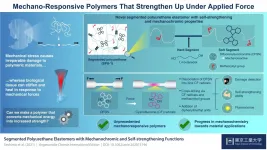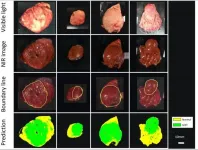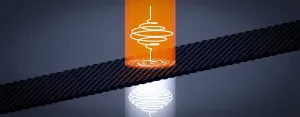Taking the fear out of driver education
New research shows that a positive approach works best to promote safe driving
2021-02-02
(Press-News.org) New drivers between the ages of 15 and 25 account for nearly half of the more than one million road deaths that occur worldwide each year, according to the World Health Organization. Educational programs often use fear-based messaging and films of crash scenes to reduce risky driving behavior among young people. But does this "scary" approach work?
A new study published in the journal Risk Analysis suggests that fear-based messaging fails to reduce risky driving behavior, while fear-based Virtual Reality (VR) films depicting a violent collision may actually lead young drivers to take more chances behind the wheel.
A team of psychologists led by University of Antwerp researcher Clara Alida Cutello, PhD, conducted a study of 146 students who had been legally driving for less than five years. The researchers examined the impact of both content (fear vs. positive) and delivery mode (2D vs. VR) of driver safety intervention programs.
Fear-based driver ed films often show terrible crash scenes in graphic detail. The assumption behind this approach is that arousing a sense of fear by depicting a serious consequence such as death will persuade young people to drive more carefully. Positively framed films take the opposite approach, using humor and empathy and modeling safe driving behaviors that result in positive consequences.
Three tests were used to gauge the risk-taking behavior of the young drivers before and after participating in the intervention program. One was a Driver Behavior Questionnaire. The other was the Vienna Risk-Taking Test on traffic, which asks participants to watch video clips of driving situations from the point of view of the driver and choose whether they view a situation as too risky. For example, choosing whether to pass another car in icy conditions. A third test was a 21-item Emotional Arousal Scale that measured the level of emotional arousal (such as feeling afraid) after watching a film.
The results showed that participants who viewed the fear-based VR film reported riskier driving behaviors afterward, while those who viewed a positively framed VR film exhibited the greatest reduction in risky driving behavior. This finding supports other research that has shown that exposing participants to an extreme and graphic collision tends to activate defensive mechanisms, such as paying attention for a shorter time, disengaging, rejecting a message, and an increase in risky behaviors.
"Fear appeals have been used in many health and environmental campaigns, such as smoking, anti-drug, safe sex, and HIV prevention campaigns," says Dr. Cutello. "Further experimental research is needed to determine whether the use of fear is effective."
INFORMATION:
About SRA
The Society for Risk Analysis is a multidisciplinary, interdisciplinary, scholarly, international society that provides an open forum for all those interested in risk analysis. SRA was established in 1980 and has published Risk Analysis: An International Journal, the leading scholarly journal in the field, continuously since 1981. For more information, visit http://www.sra.org.
ELSE PRESS RELEASES FROM THIS DATE:
2021-02-02
Are Gut Microbes the Key to Unlocking Anxiety
A mouse study suggests the genetic contribution to anxiety is partially mediated by the gut microbiome
By Greta Lorge
The prevalence of anxiety disorders, already the most common mental illness in many countries, including the U.S., has surged during the novel coronavirus pandemic. A study led by researchers in Berkeley Lab's Biosciences Area provides evidence that taking care of our gut microbiome may help mitigate some of that anxiety.
The team used a genetically heterogeneous lineage of mice known as the Collaborative Cross (CC) to probe connections among genes, gut microbiome ...
2021-02-02
A fascinating and crucial ability of biological tissue, such as muscle, is self-healing and self-strengthening in response to damage caused by external forces. Most human-made polymers, on the other hand, break irreversibly under enough mechanical stress, which makes them less useful for certain critical applications like manufacturing artificial organs. But what if we could design polymers that reacted chemically to mechanical stimuli and used this energy to enhance their properties?
This goal, which has proven to be a big challenge, is under the spotlight in the field of mechanochemistry. In a recent study published in Angewandte Chemie ...
2021-02-02
Tumors can be damaging to surrounding blood vessels and tissues even if they're benign. If they're malignant, they're aggressive and sneaky, and often irrevocably damaging. In the latter case, early detection is key to treatment and recovery. But such detection can sometimes require advanced imaging technology, beyond what is available commercially today.
For instance, some tumors occur deep inside organs and tissues, covered by a mucosal layer, which makes it difficult for scientists to directly observe them with standard methods like endoscopy (which inserts a small camera into a patient's body via a thin ...
2021-02-02
Telehealth use has surged during the pandemic at clinics that serve lower-income Americans, which allowed the clinics to maintain access to care at a time when many other health care organizations saw significant declines in utilization, according to a new RAND Corporation study.
However, most of the telehealth appointments have been audio-only visits, which may pose challenges in the future if payers consider dropping reimbursement for such services.
Studying more than 500 clinic locations across California, researchers found that while overall visit volume remained stable during the pandemic, about half of primary care medical visits from March to August 2020 ...
2021-02-02
Nanoscience - Blowing the whistle on COVID-19
Collaborators at Oak Ridge National Laboratory and the University of Tennessee Health Science Center are developing a breath-sampling whistle that could make COVID-19 screening easy to do at home.
The technology incorporates a unique hydrogel material to capture aerosols from exhaled breath and preserve the samples, which could either be sent to a lab for analysis or, for a fully at-home approach, transferred to an accompanying test kit that could detect the SARS-CoV-2 virus that causes COVID-19.
"Our motivation ...
2021-02-02
Topological insulators are one of the most puzzling quantum materials - a class of materials whose electrons cooperate in surprising ways to produce unexpected properties. The edges of a TI are electron superhighways where electrons flow with no loss, ignoring any impurities or other obstacles in their path, while the bulk of the material blocks electron flow.
Scientists have studied these puzzling materials since their discovery just over a decade ago with an eye to harnessing them for things like quantum computing and information processing.
Now researchers at the Department ...
2021-02-02
Ten months into COVID-19 living, people are adapting to speaking from behind, and understanding others who are wearing, a cloth face mask, University of California, Davis, researchers suggest in a new study.
Researchers in the Department of Linguistics at UC Davis and University of Wisconsin, Milwaukee, investigated how well speech is understood from those speaking while wearing a cloth mask. Due to social distancing measures, speakers for the study consisted of individuals from the same household, who recorded sentences while face-masked and non-face-masked. The researchers tested how well a separate group ...
2021-02-02
New Haven, Conn. --A new study by Yale researchers found a significant association between the availability of hospital resources -- particularly ICU beds -- and patient mortality during the early weeks of the COVID-19 pandemic.
This was especially true at hospitals in the northeastern U.S. which were hardest hit by the first surge of patient cases, according to the study published in the Journal of Hospital Medicine.
"There is a general narrative among people in healthcare that the more resources there are, the better we can take care of patients," said lead author Dr. Alexander Janke, a Yale Emergency Scholar in the fourth year of a five-year combined residency and health services research fellowship. "This study begs ...
2021-02-02
Many surgeries today are performed via minimally invasive procedures, in which a small incision is made and miniature cameras and surgical tools are threaded through the body to remove tumors and repair damaged tissues and organs. The process results in less pain and shorter recovery times compared to open surgery.
While many procedures can be performed in this way, surgeons can face challenges at an important step in the process: the sealing of internal wounds and tears.
Taking inspiration from origami, MIT engineers have now designed a medical patch that can be folded around minimally invasive surgical tools and delivered through airways, intestines, and other narrow spaces, to patch up internal injuries. ...
2021-02-02
Interim analysis from phase 3 trial of nearly 20,000 participants suggests efficacy of two-dose regimen of the adenovirus-based vaccine is 91.6% against symptomatic COVID-19 - trial reports 16 COVID-19 cases in the vaccine group (0.1% [16/14,964) and 62 cases (1.3% [62/4,902]) in the placebo group.
No serious adverse events were deemed to be associated with vaccination, and most reported adverse events were mild, including flu-like symptoms, pain at injection site and weakness or low energy.
Sub-analysis of 2,000 adults older than 60 years suggests the vaccine is similarly effective and well tolerated in this group.
Trial is ongoing ...
LAST 30 PRESS RELEASES:
[Press-News.org] Taking the fear out of driver education
New research shows that a positive approach works best to promote safe driving




